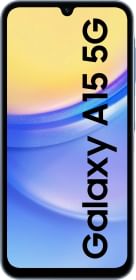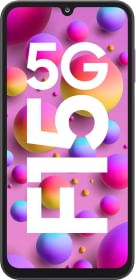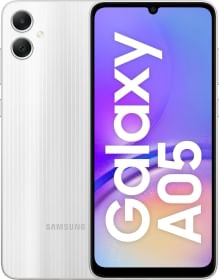NFT is emerging as a new thing in the technology world that you might have come across while web browsing for digital art and have wondered what actually NFT is. Well, in short words, NFT is described as a unique string of codes associated with digital content like photos, audio, and video which denotes their ownership. But that’s not everything to know about NFTs, so we have prepared a comprehensive article for better understanding. Let’s learn everything about NFT.
Table of Contents
- What is NFT?
- How NFT is used in Digital Content?
- What is the role of Blockchain in NFT?
- How did NFT start first?
- How to Buy NFTs?
- How to create and sell NFTs?
- Cons related to NFTs
- End Note on NFT
What is NFT?

NFT is elongated as a Non-fungible Token. Let’s break down that name once. Starting with ‘fungible’, which means a mutual interchange of items or goods without altering the actual value of the items. For example, asking for an exchange of a ₹200 note with four ₹50 notes. You see the items are similar even if the denominations are different.
On the contrary, ‘non-fungible’ items can’t even be interchanged with similar items. Say you exchange the famous ‘The Starry Night’ painting by Vincent Van Gogh (kept at the Museum of Modern Art, New York) with a high-resolution printed copy of the same. Not a good idea, right? So, the original painting here acts as a non-fungible item because of its uniqueness and authenticity.
At last, the ‘token’ keyword in NFT is the unique key that possesses details and metadata like the original creator, current owner, and the prevailing market price. Tokens in an NFT include a 40-character combination of alphabets and numbers that are part of Blockchain technology.
So, NFT is better described as the state of ownership of a digital item with some value and information which makes this thing a digital asset. NFTs are created by and stored in Blockchain and are, thus, incorruptible in nature as the blockchain process makes them decentralized.
How NFT is used in Digital Content?

Advanced development in technology has enabled the world with better tools for creating digital forms of art including images, music, videos, and other creatives. Sequentially, the tech world has made it possible to simulate and tamper with almost every kind of work (that’s originally owned by somebody else) and post it as one’s own. And when someone kicks a hunt to find out the original creator, it proves to be really non-feasible. To solve this misery, NFT comes into existence.
NFT authenticates the digital creation and marks a legitimate label on the item to be openly circulated over the internet. We can conveniently say that NFT is the digital authentication of digital art. It lets the digital artists create NFT of their artwork and put them off for auction. Interestingly, NFT offers complete freedom to transfer the linked information of the art piece as many times it is sold to different buyers. For each re-sell, NFT provide a fair share of the sell amount to the original creator.

In India, Amitabh Bachchan has put his NFT collections on auction and received a whopping bid of $966,000 (approximately Rs 7.2 crore). The NFT collection of BigB includes Madhushala NFT (his father’s poetry recorded in Amitabh’s voice), seven autographed posters from his movies, and some other collectables. Salman Khan has also joined the league by announcing the launch of BollyCoin – an NFT marketplace.
Jack Dorsey, the founder of Twitter, sold his first tweet as NFT at a massive price of $2.9 million. The NFT of Beeple – an American digital artist, named ‘Everyday’s: the First 5000 Days’ is sold for the highest ever price of $69.3 million.
What is the role of Blockchain in NFT?
Blockchain technology is the base on which NFTs are created. Like cryptocurrencies are built to work as currencies to buy or sell goods, similarly, NFTs generate unique tokens for items to depict ownership along with the right to sell or buy it. Despite both following the same underlying Blockchain technology, they are created to cater to different purposes. Also, not to be missed that cryptocurrencies are fungible tokens.
ALSO READ: How to run two WhatsApp accounts on a phone
How did NFT start?
Ethereum, one of the largest cryptocurrency technology, started to create an NFT blockchain system as a project in 2015 following the ERC-721 standards and later on ERC-1155. They launched ‘CryptoKitties’ – a blockchain game, which enables players to buy, collect, and sell different breeds of virtual cats. The success of the game instigated Ethereum to introduce the NFT system and now, they are leading the market.
How to Buy NFTs?

NFTs can be bought through cryptocurrencies only. So, before considering buying an NFT, you should have an active crypto wallet supporting NFTs and ensure enough balance in the wallet. There are several marketplaces with different supported crypto wallets from which you can choose to buy NFTs. Some biggest NFT marketplaces around the world are:
- OpenSea
- Axie Marketplace (Ethereum blockchain)
- Larva Labs/CryptoPunks
- Rarible
- SuperRare
- Nifty Gateway
- Guardian Link (platform where Amitabh Bachchan sold his NFT)
- Foundation
ALSO READ: Top Indian-origin CEOs of Global Tech Brands
How to create and sell NFTs?

Just like buying NFTs, a crypto wallet is required to create your own NFT. Some of the popular wallets are MetaMask, Coinbase Wallet, Fortmatic, Dapper, WalletConnect, etc. Once the wallet is selected, choose one of the aforementioned NFT platforms where you can upload your digital works. You need to provide details and set a price before going for an auction.
There are other few things to note here are – some NFT marketplace charges a fee for listing your digital item, fees for converting into NFT, commission after NFT is sold, and service charge for transferring the sell amount to the cryptocurrency wallet.
Concerns with NFTs
While NFT comes with some great benefits for digital artists and people in the field, still it is tagged along with a few cons worth mentioning. Here are they:
- Holding NFT of original content doesn’t mean that duplicate copies can’t be made. Literally, one just can’t simply control its distribution or replication across different platforms.
- NFT requires a great deal of energy in its creation and management and thus can impact ecology with unfavourable outcomes.
- Machines used for blockchain mining need highly valued GPU and thus, GPU prices may see a hike.
- NFTs are prone to be stolen. Even though the underlying technology behind NFT is safe, marketplaces are still open for cyber security breaches.
So what’s your take on NFTs?
Since this technology is at its nascent stage, there’s much to be researched on this NFT technology and on how it will shape the future. It seems to have much potential to grow, although it’s hard to make any solid conclusion. Anyways, after reading this comprehensive article on the topic, we hope that you can now debate NFT within your social circle. You could start discussions in the comments section below.
































